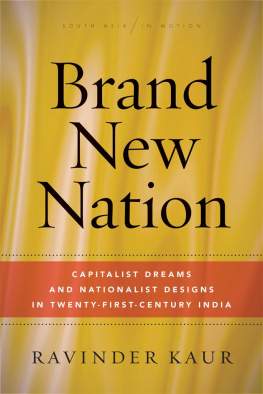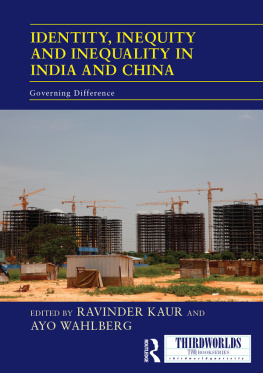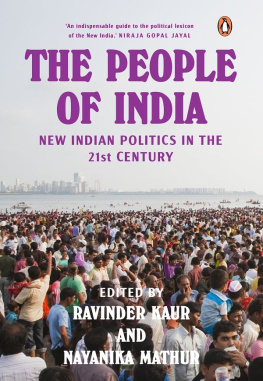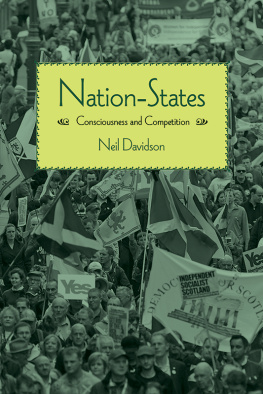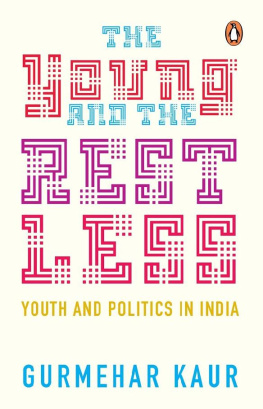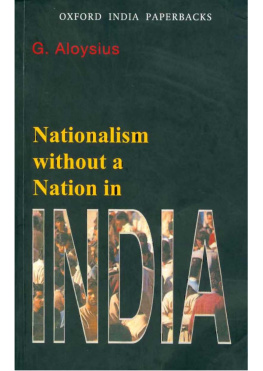Ravinder Kaur - Brand New Nation: Capitalist Dreams and Nationalist Designs in Twenty-First-Century India
Here you can read online Ravinder Kaur - Brand New Nation: Capitalist Dreams and Nationalist Designs in Twenty-First-Century India full text of the book (entire story) in english for free. Download pdf and epub, get meaning, cover and reviews about this ebook. year: 2020, publisher: Stanford University Press, genre: Politics. Description of the work, (preface) as well as reviews are available. Best literature library LitArk.com created for fans of good reading and offers a wide selection of genres:
Romance novel
Science fiction
Adventure
Detective
Science
History
Home and family
Prose
Art
Politics
Computer
Non-fiction
Religion
Business
Children
Humor
Choose a favorite category and find really read worthwhile books. Enjoy immersion in the world of imagination, feel the emotions of the characters or learn something new for yourself, make an fascinating discovery.
- Book:Brand New Nation: Capitalist Dreams and Nationalist Designs in Twenty-First-Century India
- Author:
- Publisher:Stanford University Press
- Genre:
- Year:2020
- Rating:5 / 5
- Favourites:Add to favourites
- Your mark:
- 100
- 1
- 2
- 3
- 4
- 5
Brand New Nation: Capitalist Dreams and Nationalist Designs in Twenty-First-Century India: summary, description and annotation
We offer to read an annotation, description, summary or preface (depends on what the author of the book "Brand New Nation: Capitalist Dreams and Nationalist Designs in Twenty-First-Century India" wrote himself). If you haven't found the necessary information about the book — write in the comments, we will try to find it.
Ravinder Kaur: author's other books
Who wrote Brand New Nation: Capitalist Dreams and Nationalist Designs in Twenty-First-Century India? Find out the surname, the name of the author of the book and a list of all author's works by series.
Brand New Nation: Capitalist Dreams and Nationalist Designs in Twenty-First-Century India — read online for free the complete book (whole text) full work
Below is the text of the book, divided by pages. System saving the place of the last page read, allows you to conveniently read the book "Brand New Nation: Capitalist Dreams and Nationalist Designs in Twenty-First-Century India" online for free, without having to search again every time where you left off. Put a bookmark, and you can go to the page where you finished reading at any time.
Font size:
Interval:
Bookmark:
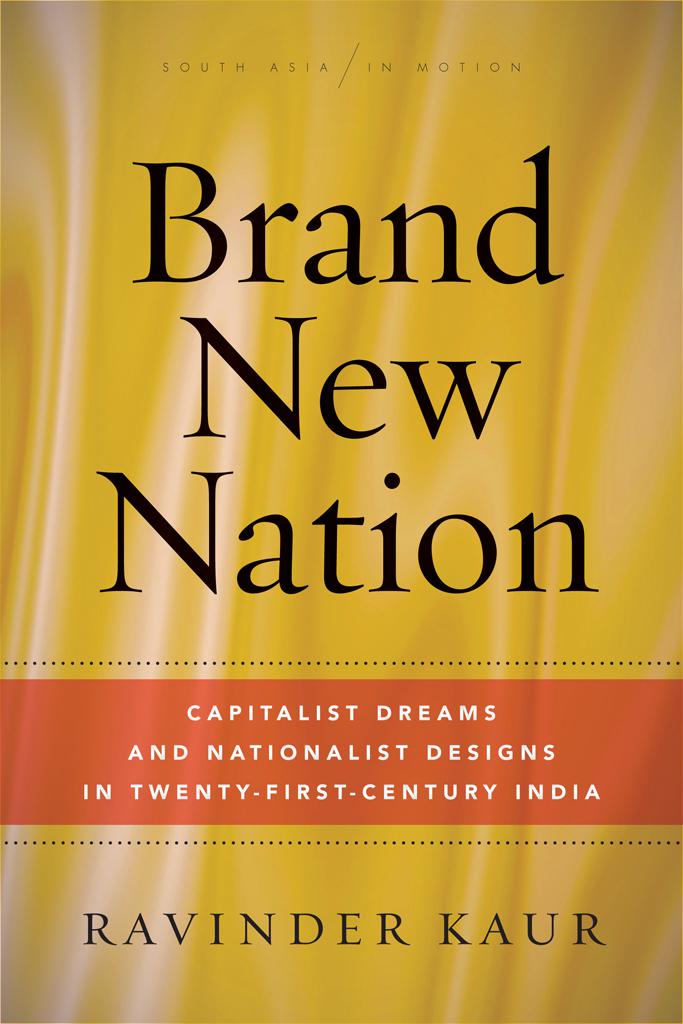

BRAND NEW NATION
Capitalist Dreams and Nationalist Designs in Twenty-First-Century India
RAVINDER KAUR
STANFORD UNIVERSITY PRESS
STANFORD, CALIFORNIA
Stanford University Press
Stanford, California
2020 by the Board of Trustees of the Leland Stanford Junior University.
All rights reserved.
No part of this book may be reproduced or transmitted in any form or by any means, electronic or mechanical, including photocopying and recording, or in any information storage or retrieval system without the prior written permission of Stanford University Press.
Printed in the United States of America on acid-free, archival-quality paper
Library of Congress Cataloging-in-Publication Data
Names: Kaur, Ravinder (Professor of South Asian studies), author.
Title: Brand new nation : capitalist dreams and nationalist designs in twenty-first century India / Ravinder Kaur.
Other titles: South Asia in motion.
Description: Stanford, California : Stanford University Press, 2020. | Series: South Asia in motion | Includes bibliographical references and index.
Identifiers: LCCN 2020009907 | ISBN 9781503612242 (cloth) | ISBN 9781503612594 (paperback) | ISBN 9781503612600 (epub)
Subjects: LCSH: Investments, ForeignIndia. | Branding (Marketing)Political aspectsIndia. | National characteristics, East Indian. | NationalismEconomic aspectsIndia. | CapitalismIndia. | IndiaEconomic conditions1991 | IndiaEconomic policy19912016. | IndiaEconomic policy2016
Classification: LCC HG5732 .k384 2020 | DDC 330.954dc23
LC record available at https://lccn.loc.gov/2020009907
Cover design: Rob Ehle
Typeset by Motto Publishing Services in 11/15 Adobe Caslon Pro
SOUTH ASIA IN MOTION
EDITOR
Thomas Blom Hansen
EDITORIAL BOARD
Sanjib Baruah
Anne Blackburn
Satish Deshpande
Faisal Devji
Christophe Jaffrelot
Naveeda Khan
Stacey Leigh Pigg
Mrinalini Sinha
Ravi Vasudevan
For Anton and Noor
FOR ONE WEEK every year, the main street in Davos, the Promenade, turns into an unusual marketplace. As the annual meeting of the World Economic Forum (WEF) commences in this upscale Swiss ski town each January, many of its posh hotels, cafes, and even museums turn into sites of an extraordinary kind of exchange. The colorful billboards displayed on the buildings have messages such as India: Land of Limitless Opportunities, Make in India, Malaysia: Doing Business, Building Friendships, Brazil: A Country of Opportunity, Innovation, Sustainability, Creativity, Mexico: Seize the Day, Egypt: Invest in the Future, and Proudly South Africa: Imagine New Ways. First-time visitors may find these advertisements puzzling. What kind of commodity is being showcased, and who might be the intended consumers? But for regular visitors, the spectacle of nations jostling for attention is a familiar sight during WEF week. These sites are the veritable front offices of nation brands: nations packaged and advertised as attractive investment destinations in global markets. During the past decade and a half, they have become popular landmarks on the global investment trail, well-known stopovers in the packed itinerary of investors forever in search of new profitable opportunities.
This exclusive world of nation brands is a strange, heady mix of optimism and anxiety, and it is seemingly forever on the move. On my first visit to Davos in 2012, I found myself seated next to two men dressed in smart business suits at Brand Indias lounge, India Addamarketed as a quintessential Indian hangout representing Indias culture of commerceat Caf Schneider. I recalled seeing them the previous day on Brand South Africas premises in the Kirchner Museum, where an exhibition on the African growth story had been inaugurated. We exchanged our business cards, the first ritual of networking, and over cups of masala chai sponsored by the Tea Board of India, they expressed their love for India and all things Indian. They were both investment bankers at a major global investment-management firm specializing in emerging markets. As I glanced at their business cards, the one in the purple tie jovially explained his job as an explorer who discovers new investment hotspots in the world. So where are those new hotspots? I asked. He replied promptly, In the emerging markets: the bright rays of hope in Asia, Africa, and Latin America cutting through the dark clouds of recession in the Euro zone. Mexico is coming up, Brazil is an attractive bet, and even Egypt is promising for those looking for alternatives, his companion chimed in. India is a long-term investment, he said in a reassuring tone. But the emerging markets can be risky; they heat up and cool down, and therefore one had to be ready to seize new opportunities, the man in the purple tie added with a broad smile as they prepared to leave. In this futures market, it seemed, the investors were forever in search of new investment hotspots across the world, just as the nations hoped to be discovered and loved as attractive investment destinations. Due thanks and pleasantries done, they stepped out in the fresh snow that had covered the Promenade in the meantime. They were headed to the Mexico pavilion in Hotel Panorama, where a festive evening celebrating Mexicos potential as an investment destination was about to begin.

FIGURE 1.1. India Adda publicity poster featuring technofriendly young Indians invites global conversations on India. Kirchner Museum, Promenade, Davos, 2012. Taken by author.
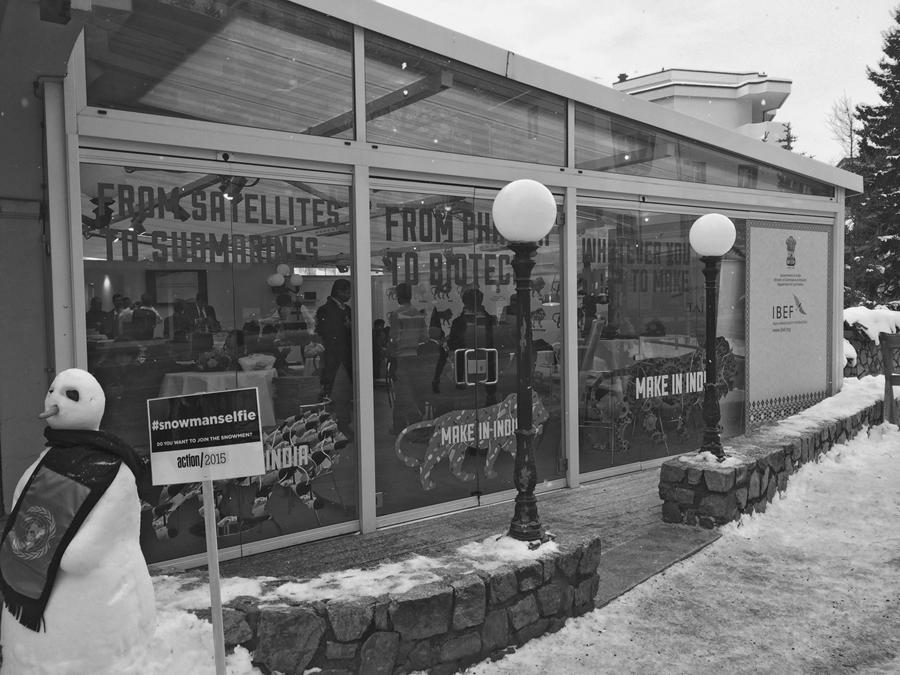
FIGURE 1.2. A street view of the India Adda/Make in India Lounge. Winter Garden, Caf Schneider, Davos, 2015. Taken by author.

FIGURE 1.3. Hotel Belvedere featuring Brand Egypt. 2015. Taken by author.
This flash-in-the-pan encounter, polite and even charming, peppered with speculations and forecasts of risks and opportunities, is typical of how conversations unfolded in these settings. The affective language of hope and optimismthe compulsory good news the business world thrives onthat the two bankers had used to describe the futures market of nation brands was familiar to me. I had been drawn into this world at a particularly dramatic moment when Indias emergence and rise as a world player, propelled by its high economic growth performance and future potential, was being celebrated across the world. India was said to have arrived on the global stage, the primus motor of the Asian century that together with China was expected to eclipse Western hegemony in world affairs. It was as if the pace of history had accelerated in anticipation of a new time when India could finally be rescued from the waiting room of history and reoriented toward a limitless future. The early twenty-first century, we were told, was that of ascendance of the South, especially BRICSBrazil, Russia, India, China, and South Africathe so-called big five. These countries were the leading stars of the many capitalist growth stories unfolding in the postcolonial and postcommunist nations. Envisioned afresh as an investment opportunity, the old third world was no longer a dark container of deprivation and overpopulation but a rich reservoir of resources and raw talent bolstered by its youthful demographic dividend waiting to be tapped by innovative entrepreneurs. The established hierarchies of north/south, rich/poor, core/periphery, developed/developing, and empire/colony seemed superfluous in the large-scale transformations redrawing the twentieth-century world map. The familiar world appeared to be upside down. In this unsettling capitalist geography, Indias emergence as a prominent nerve center of unbridled capitalism was a critical event in more ways than one.
Font size:
Interval:
Bookmark:
Similar books «Brand New Nation: Capitalist Dreams and Nationalist Designs in Twenty-First-Century India»
Look at similar books to Brand New Nation: Capitalist Dreams and Nationalist Designs in Twenty-First-Century India. We have selected literature similar in name and meaning in the hope of providing readers with more options to find new, interesting, not yet read works.
Discussion, reviews of the book Brand New Nation: Capitalist Dreams and Nationalist Designs in Twenty-First-Century India and just readers' own opinions. Leave your comments, write what you think about the work, its meaning or the main characters. Specify what exactly you liked and what you didn't like, and why you think so.

